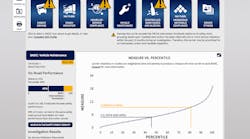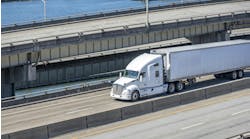New carrier? Your FMCSA safety audit may now be conducted remotely.
Every year an average of 34,000 new interstate motor carriers (“new entrants”) apply for U.S. Department of Transportation (DOT) operating authority. Before they can be permanently approved, the Federal Motor Carrier Safety Administration (FMCSA) must conduct a review to assess the carrier’s safety performance and safety management practices.
Where FMCSA at one time tried to audit each new entrant within its first 18 months of operation, Congress urged that these initial audits be conducted within 12 months. That required FMCSA and its state counterparts to coordinate on an expedited program. Eight years of field testing in 10 states resulted in FMCSA’s announcement in late 2018 that new entrant safety audits may now be conducted remotely in all 50 states. These “offsite safety audits” do not require a safety auditor to schedule an in-person visit to the carrier’s office. Instead, the carrier is requested by letter to log in and upload to an FMCSA platform specified digital records, which are then reviewed by the agency.
Not every new entrant is eligible for an offsite safety audit. During the trial period, carriers handling hazardous materials or transporting passengers were excluded. Similarly, those with an identified safety issue still received the direct FMCSA visit. But, overall, the agency reported to Congress that 60% of new entrants in the 10 test states were eligible for offsite analysis. And the FMCSA dollar and manpower savings were significant: offsite safety audits required 33% less time than on-site audits and required 58% less in agency travel costs.
A typical FMCSA safety audit will look at six aspects of a carrier’s operations:
- Driver qualification files
- Drug and alcohol testing records
- Hours of service (HOS) records
- Vehicle inspections
- Vehicle permits and registration
- Insurance
Of those six, the first three are most readily handled through FMCSA’s remote review of documents, though all may be considered.
FMCSA has also laid out categories of violations that will cause a new entrant to automatically fail its initial audit:
Alcohol and drug violations
- No alcohol and/or drug testing program
- No random alcohol and/or drug testing program
- Using a driver who refused a required alcohol or drug test
- Using a driver the company knows had a blood alcohol concentration of 0.04% or greater
- Using a driver who failed to complete the required follow-up procedures after testing positive for drugs.
Driver violations, a new entrant fails the safety audit for knowingly:
- Using a driver without a valid commercial driver’s license (CDL)
- Using a disqualified driver
- Using a driver with a revoked, suspended, or canceled CDL
- Using a medically unqualified driver
Operations violations
- Operating a motor vehicle without having in effect the required level of insurance
- Failing to require drivers to make HOS records
Repairs and inspections violations
- Operating a vehicle declared out-of-service (OOS) for safety deficiencies before repairs are made
- Not performing OOS repairs reported in driver-vehicle inspection reports (DVIRs)
- Operating a commercial motor vehicle (CMV) not periodically inspected
If the new entrant passes its initial safety audit, FMCSA will closely monitor its safety for the balance of the first 18 months, after which the carrier will be granted permanent authority and be subject to review under the Compliance, Safety and Accountability (CSA) program like any operator. If the new entrant fails, it must follow FMCSA instructions and submit a corrective action plan within a specified number of days to retain its registration.
With offsite safety audits, FMCSA will be touching more carriers and determining their ability to operate – remotely.
Steve Vaughn is vice president of field operations for PrePass Safety Alliance, the provider of the truck weigh station bypass system PrePass, as well as toll payment and trucking data visualization technology. He previously served with the California Highway Patrol and is a past president of the Commercial Vehicle Safety Alliance.



